Confession #12: A Diagnosis Did Not Help
Mental Health Care Is Not Enough
*Full disclosure, I am a licensed mental health professional. In 2009, we were navigating our first year of middle school.
It is all retrospective now— I can see myself looking out of the small window beyond the long desk in that grey office where he was given an official diagnosis. I felt validated. And sad. And overwhelmed.
After the results of the testing were charted, I drove him to a prestigious university once a week to undergo 9 months of evidence-based treatment. It was a 45-minute trip, one way, on an expressway notorious for dense traffic and delays. He missed school. He missed sports practice. I missed not having to chart his levels of discomfort for the therapist to review each week.
On a scale of crying face to big cheesy grin, how do you feel?
In 5th grade, my son was diagnosed with provisional Asperger’s syndrome. To justify various treatments, they tacked on Obsessive Compulsive Disorder, Oppositional Defiant Disorder, and a Generalized Tic Disorder. We were placed on the waiting list to be seen at the autism clinic— which was, at minimum, an 18-month wait. The diagnosis would eventually be confirmed, though Asperger’s was removed from the DSM in 2013. It is now considered Autism Spectrum Disorder, without intellectual disability.
My son did not exhibit RFK’s recent description of autism—he played sports, was exceptionally verbal, and desired social connection. To this day, he is bright, he is witty, and he is well-coordinated. Nevertheless, my son’s unique neurological wiring caused an incredible amount of disruption and difficulty in his young life. Other people often interpreted his behavior as defiance—
Eye contact was painful for him.
Social cuing was a foreign language.
His sensory inputs were easily perturbed.
He obsessed over certain objects, ideas, and patterns.
He asked the same “checking” questions over and over and over.
His rigid adherence to expectations caused problems with substitute teachers. And babysitters. And peers. And siblings.
He refused to say the words, I Love You— He literally could not make the phrase come out of his mouth for several years.
Haircuts were difficult. Tags had to be cut out. Shoes in the mudroom had to be lined up by size. Toys had to be arranged by color. He could-not-would-not drink out of Styrofoam cups. He would not eat red foods. He counted everything, constantly. He had to touch our light switches a particular way, a certain number of times. I was not ‘allowed’ to sit on his bed, not even to say goodnight.
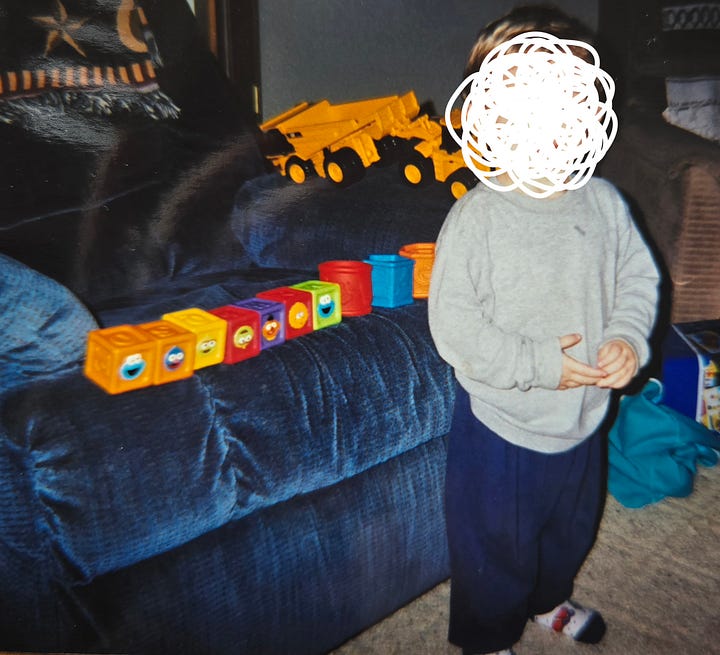
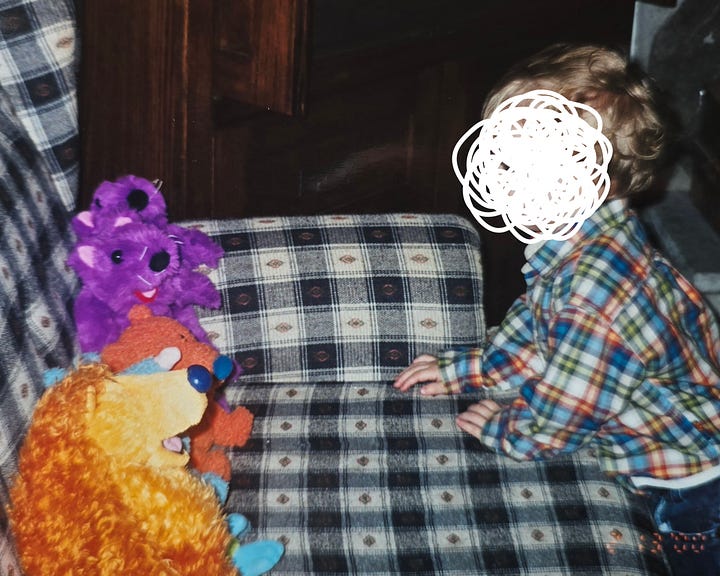
As any parent with a child who operates in clinical rigidity knows, these are not just minor agitations. They are immoveable preferences and if not satisfied, they will result in a Chernobyl-esque emotional meltdown. Spankings do not dissuade them. Hugs can make them worse.
By the time we got to 5th grade, my son was insistent that he take his coat into his classroom. He believed it had the power to block “the germs” on his seat from getting on his legs. Their grade had just begun changing classrooms a few periods a day, and this was an unwelcomed transition to my son. Other kids were using his homeroom desk when he wasn't in it, and it was distressing. When the teacher demanded that he return the coat to the hook in the hallway, he became anxiety-ridden and refused. What followed is typical: he was sent to the office and I was called. We had meetings. It happened again. He was sent home. Behavior plans were drawn up. Teachers got sick of us.
He was also starting to tic by 6th grade. Disruptingly. His head would jerk up and to the left. His jaw would jut outward. He would tap his chest incessantly when he got stressed— bruising himself from what we now call stimming.
By 9th grade, his medical doctor had concerns.
He had hypertrophied the left side of his upper abdomen after adhering to a workout regime that demanded exactly 500 sit-ups per day. An athlete, he would complete a round of P90X in the morning before his 1st football practice, come home and eat, and then complete one of the Insanity DVD workouts before heading back to the 2nd football practice of the day. This went on for an entire summer. His dedication was admirable, but he was being applauded for clinical compulsions and obsessions.

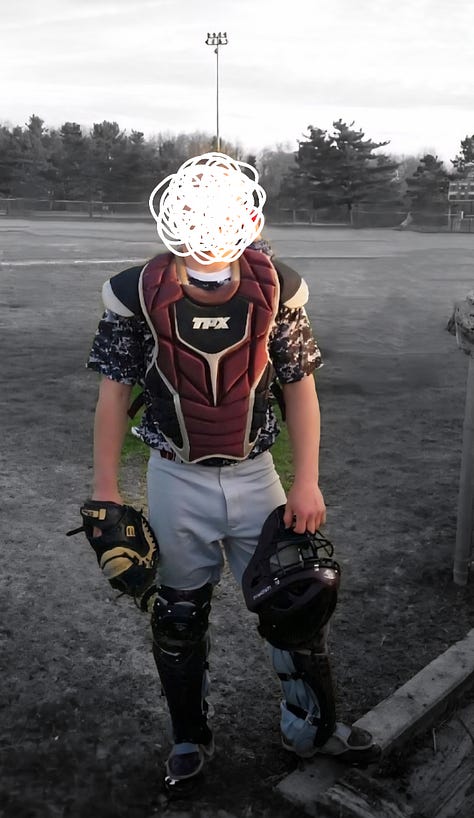
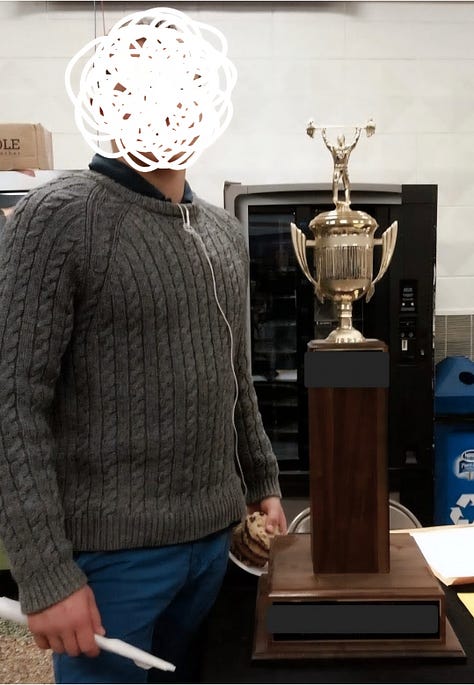
My concern grew.
I took him back to the doctor after I found him, a high school freshman, on his bedroom floor sobbing. He was blank-faced and passively suicidal. He said he was not sure if he could keep living “like this.” As a psychology grad student, I was triggered, jumping dutifully into fix-it mode.
We started the first round of pharmaceuticals that year.
He seemed to live with more ease for nine months— and then the rollercoaster of tolerance and titration began. As the dosing got higher and higher, the side effects dizzied him until he requested to be taken off. Talk of suicide and more behavior changes made clear to me that the meds were not helping (and perhaps, even harming).
I was also dragging him to weekly therapy.
We tried all kinds of interventions— including equine-assisted therapy and martial arts. He saw male therapists, he saw female therapists. He went to groups. He met with the school social worker. He went to camps. He went through CBT, ERP, systematic desensitization, aversion therapy, and somatic therapies. We did family therapy. By his senior year in an alternative education setting, he had seen seven therapists, three psychiatrists, been in the emergency room twice for self-harm, had been hospitalized, and even went to one of those “wilderness intervention camps” for a week. He ran away from home in the dead of winter, missing until the cops found him 8 days later.
None of this would assuage his pain.
Only elicit drugs would do that.
In 2020, while facing a preliminary round of criminal charges, he was mandatorily re-evaluated by a PhD psychologist. Autism was, again, the primary diagnosis, followed closely by Anxiety Disorder. Both Substance Use Disorder and ADHD were added to the growing list. I will stay off of my ADHD soapbox today. I will stay off of my ADHD soapbox today.
The soapbox that I would rather trot out and climb upon is this— all of the diagnostic clarification in the world and all of the mental health supports that our money could buy did not stop my son from using drugs to the consequence of long-term incarceration.
Akin to the unhelpful “Where were the parents?!” trope, the exclamation-ending “He needs mental health treatment!” comments online have become equally exhausting to me.
Parents do not get to push a button and immediately access adequate mental health support for their child. It is weeks and months and years of appointments, referrals, waits, interviews, and frustration with dud clinicians. Newer crisis models are encouraging, but even some of those fail by triaging poorly— I have had students sit (with their exhausted guardian) for 12 hours in the emergency room following a referral for IMMEDIATE mental assessment. An emergency department, filled with all manner of adult psychoses and medical trauma, is not the place for a suicidal teen.
Even with the insurance and money and time to find adequate support (and adequate is being generous in many cases), waitlists are prohibitive. After you white-knuckled the waiting periods, you find maintaining weekly appointments and therapy homework assignments to be new landmines in the battleground for your family’s sanity. Therapy is not a magic tonic. It is HARD work, and let’s be candid— it is often mom who grinds the stone.
As a provider myself, I have often recognized how far down-stream I am positioned when an angsty teenager is poured into my office (or connected on a telehealth screen). That is not to say that I and other supports are not helpful, even life-changing— but it is to say that the community and the family and a child’s peers are the most salient resources for someone who is feeling sad and confused and awkward.
Contrarily, the humans meant to be our villages during hard times are out here pointing and screaming “that kid” needs “help” while they shutter windows and instruct their own kids to keep away.
Well, thanks for the advice from your touchscreen.
When he was arrested, I worried first about him going into DT’s. He would endure coming off meth, alcohol, weed, and I don’t know what else in a cold holding cell. I suffered through those nights by proxy, hoping that someone was watching and offering my child some kind of help. They didn’t.
Of course I have worried endlessly about his mental health through all of this.
I was afraid he would attempt to take his life after his sentencing. I could not see him nor talk with him, and he was in isolation from other humans. It was Covid— human connection had been cut. I only heard about new medications and sleep concerns and isolation cells on the phone, after the fact, if he wanted to tell me. To this day, his is not a world that I can inhabit, nor understand, and frankly, as he is an adult and a ward of the State— his mental health care ceased being my business long ago.
Do you know what stands out to me now, in hindsight?
In every psychological assessment, police report, and court record I have read about my son, he is noted to have been “pleasant,” “cooperative,” “forthcoming,” “honest,” “open,” and “polite.” From 2009 until last year, these are the character descriptors legally attached to his name. He has never exhibited combative behaviors toward authority, and he has cooperated with every single request of the many police officers that he has had the opportunity to meet. Even when he knew it would result in arrest. Even when it meant months of solitary confinement. Even when he was losing his mind, strung out on drugs. I do not know if I would be as self-controlled as he has been.
I sit here today in awe of him— given all that he has endured as a man with a history of mental health diagnoses, dating back to childhood. He is not violent and he is not evil and he is not a liar. The overwhelming evidence is this: he wants to be connected to other human beings in positive ways. Despite mainstream impressions of incarcerated individuals, the vast majority of our citizens on the inside are not vicious nor predatory. They are just treated that way—
I have neither the time nor the energy today to expose the abysmal state of mental health care in American jails and prisons. Sufficed to say that when we shuttered State-run mental institutions in the 1980s, we believed that the community would subsume the responsibility for our vulnerable citizens. It did not. The rate of incarceration for individuals with mental illness is a boil on this country’s derriere.
After years of being on both sides of the therapy couch, I am convinced that mental health providers cannot “fix” the mental health crisis in this land. Not on their own. It is a community puzzle that requires parent input, neighborhood involvement, changes in education, and focus shifts that will make us all a bit uncomfortable.
Recently, my son did tell me that he has a decent therapist inside whom he gets to see once per month. This is a first. Whether the therapist is that good or my son was that ready (or both), something has aligned. He is using some of this down-time to discuss his thoughts and feelings with a licensed professional. He has shared his personal insights and patterns of thinking with me too, admitting last month during a phone call that he loathed and avoided therapy because, “well, you.” Meaning me— his therapist mom.
And I can accept that without hurt.
In his pre-sentencing report, he told the probation officer that his family is supportive, and I quote, “sometimes too much.” That was a bucket of cold water to the face—I have been a hinderance many times in my attempts to help him.
Like everyone else in his life, I was long working at the Problem of him. I had been hypervigilent for years, still checking for his level of discomfort. My pep-talks were shrouded worries. My check-in texts emanated distrust. I was always trying to organize the next steps for him; foreseeing and sabering the danger.
He just wanted a mom, not a caseworker.
I realize, as I write this, that I am still engaged in some level of saving here as well. If I could not save my boy, I might as well try and save the whole damn prison population from injustice and dysfunction and ill treatment. It is not lost on me that I have, again, made his problems my problems.
I am human. I vacillate between a deep desire to enact change and radical acceptance of what I cannot. Give me the wisdom, indeed.
As his documented parole representative, he will be released someday to my address to begin rebuilding toward independence. Though I am his safest option, and I want nothing more than days-on-end with him after our years apart, I wonder deep down if I am his best choice. We run the risk of me becoming hypervigilent again— of me doing the driving and scheduling and worrying.
He does not need mama-bird hovering, beak-feeding, and squawking at him every dawn. I want to provide pizza night and Sunday dinner and backyard bonfires. I want him to stop by Just Because and help me lift heavy things because I am getting too old to weekend warrior every damn thing. I look forward to the day when he says, I’m doing alright now mama— and I know that he really is.
My middle son recently texted me during a night out. He was sitting with one of the kids that used to come to our house back in those middle school years— a classmate of my eldest son. I knew his family story back then; he came from rough circumstances.
In the text, my son told me that boy, now a man, said to say hi to me. I texted back, “Tell him what’s up”— surely they did not want any further dialog with an old mom on a Friday night. And then, my screen lit up.
“He said that you were the only parent that was nice to him in [our small town].”
A twisted face, swollen throat cry erupted as I tried to explain to my husband what that text meant to me. I choked out, “If that is all they say at my funeral, I’ll be happy.” There is not one mental health degree nor certification nor license that I would rather have in place of knowing that my kindness landed on a kid who was struggling— and that he carries it with him to this day, as a man.
I hope my own son feels more community kindness in the days to come. I hope people will be open to him when he transitions back to the free world. And I hope, with every fiber of my being, that his mom is just one of the people that he can say I Love You to every day.



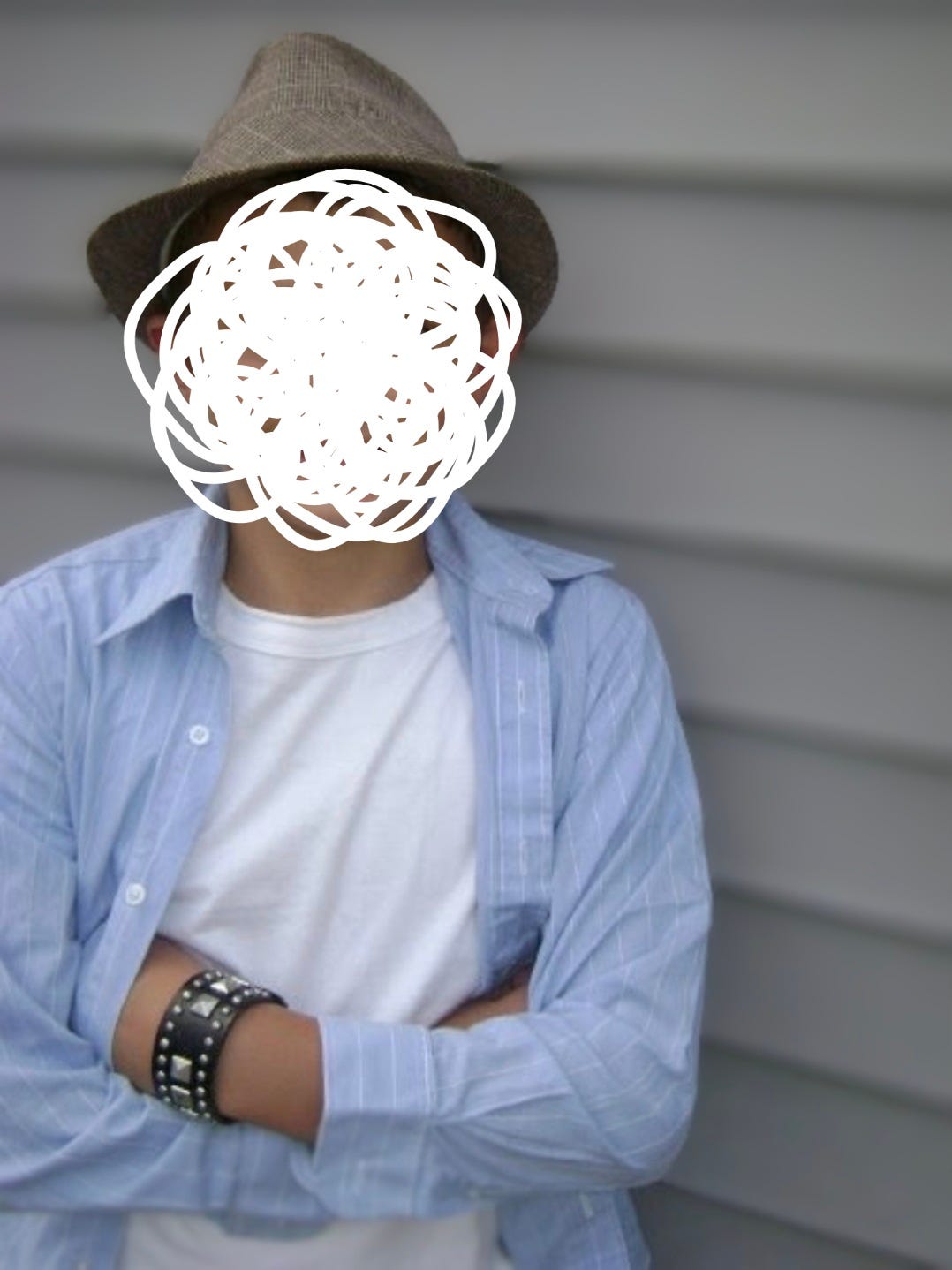
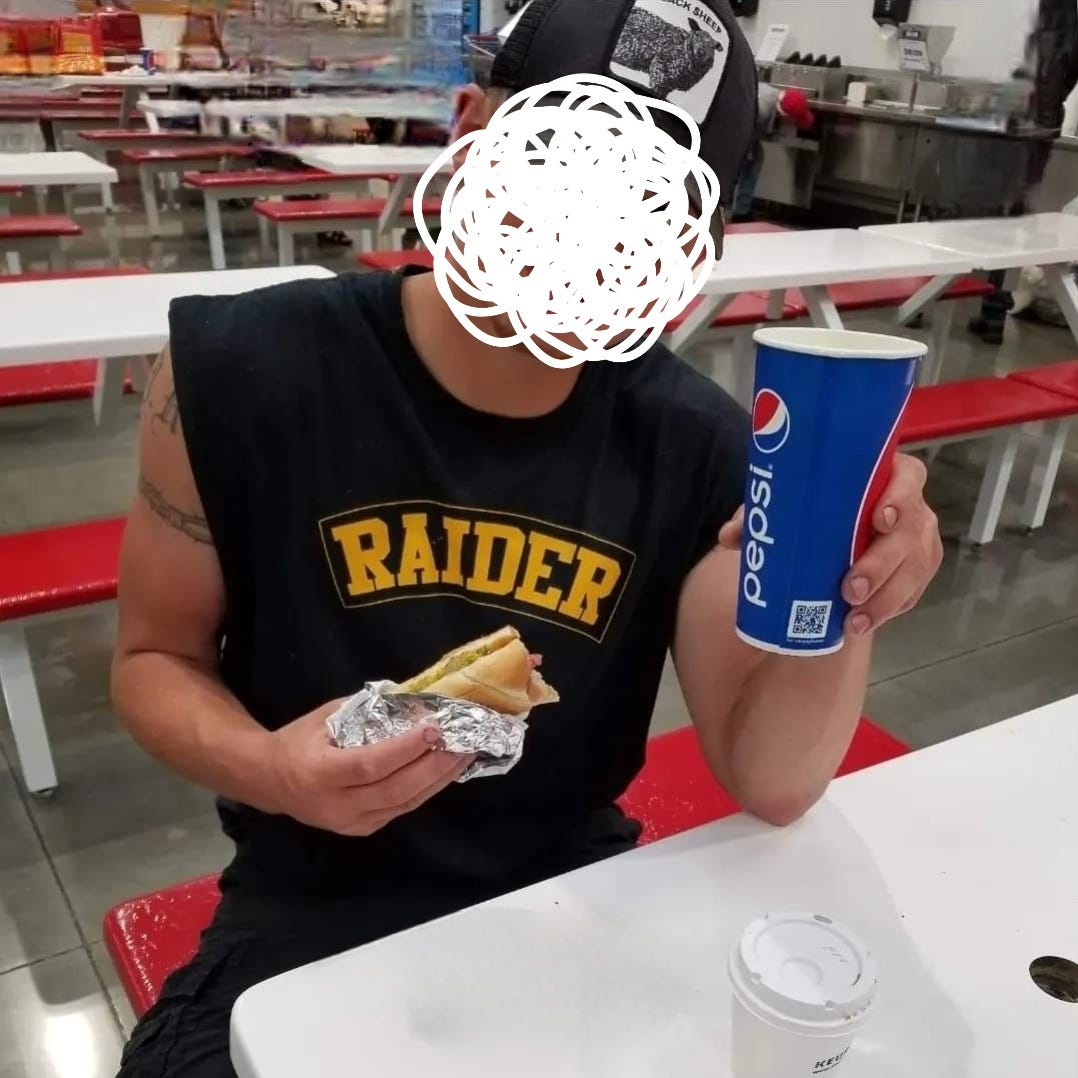
This is a fantastic albeit a difficult piece, Bridget. I know it’s published here on substack but I’d encourage you to find a mainstream outlet if you can. Thank you for writing this piece and sharing it. Big hugs to everyone in your family.
Bridget, you are a damn fine writer with a story I wish we're not true (or common). Thank you for sharing the urgency, despair, and hope with us.